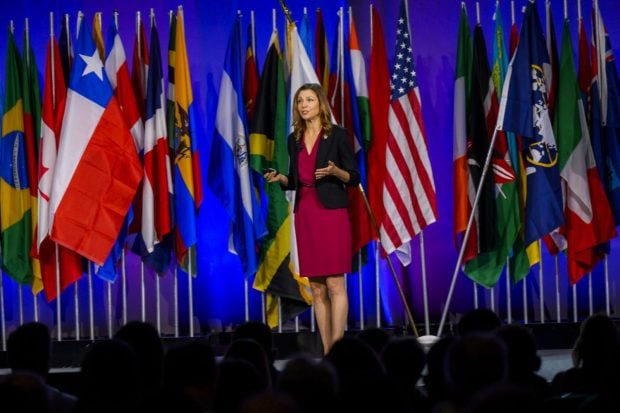 Credit/Shutterstock
Credit/Shutterstock
Credit union economists said Friday that September's stronger-than-expected jobs gain will mean high interest rates will linger longer than expected, but the Fed is still unlikely to raise rates given slowing wage gains and other factors.
The U.S. Bureau of Labor Statistics reported the nation added 336,000 nonfarm jobs in September, while unemployment remained at 3.8%.
Recommended For You
CUNA Senior Economist Dawit Kebede said not only was the gain for September twice the consensus expectation, but BLS also revised gains upward for July and August. As a result the three-month average gain of 150,000 jobs per month through August is now a 266,000-per-month average for July through September.
The report also showed average hourly earnings rose only 0.2% from August to September. The annualized growth rate of 2.4% was similar to August, "which alleviates the concern of inflation pressures coming from wage growth."
 Dawit Kebede
Dawit Kebede "The strong hiring growth in this report, and the increase in vacancies released this week in the job openings and labor turnover survey, may make markets expect more hikes in the federal funds rate," Kebede said. "However, wage growth consistent with the Federal Reserve's inflation target of 2%, improved labor supply and core inflation on a downtrend should ease this expectation."
NAFCU Chief Economist Curt Long said the nonfarm jobs gain in the employer survey "zoomed past expectations" but the separate report based on a household survey showed weaker gains.
 Curt Long
Curt Long "More importantly, wage growth sunk to its lowest level in 18 months," Long said. "NAFCU still believes that the Fed is done hiking, but with the labor market showing no signs of immediate trouble, hopes for a rate cut in the near term are unfounded."
Jonathan Smoke, chief economist at Cox Automotive, said "the September report way surprised to the upside."
"There are no signs of a hard landing in the labor market, at least not yet," Smoke said.
 Jonathan Smoke
Jonathan Smoke Demand and retail prices improved in the third quarter for used cars, and consumers "re-accelerated spending" generally. Government data showed consumer spending on vehicles and parts in the third quarter was 14% higher than a year earlier.
"There's nothing in the spending data [to suggest] a pullback," he said.
Threats in the fourth quarter include:
- The resumption in federal student loan payments.
- "Chaos" in Washington, D.C. and a threat of a government shutdown in November.
- Interest rates remaining at record highs.
- The possibility of the UAW strike broadening, and beginning to affect the auto market if it continues past Thanksgiving.
Smoke said sales in the new car market basically maintained momentum this summer and used retail sales remained close to the highest levels seen this year.
"The key reason the used car demand has been improving has been improved affordability. But if rates are going up, even with prices coming down, those two can offset each and we think we'll stop some of the incremental momentum we have been seeing," Smoke said.
"That said, it is possible that we are nearing the peak and could see rates come down," he said.
Average interest rates are 9.8% for new cars and 14.5% for used cars — the highest in 23 years for both.
The rate for 30-year fixed-rate mortgages rose to 7.53% in the week ending Sept. 29, its highest since 2000, according to the Mortgage Bankers Association.
MBA Chief Economist Mike Fratantoni said the report is likely to feed into higher interest rates.
"This report certainly surprised the market, which had been expecting a slowdown and longer-term rates jumped in response," Fratantoni said. "Mortgage rates will follow, which will likely mean that lending activity, which was already at a multi-decade low, is not going to pick up anytime soon."
The MBA's Sept. 18 forecast said it expects $358 billion in purchase originations in the fourth quarter, up 7.6% from a year earlier, while refinances will rise 21% to $82 billion.
© 2025 ALM Global, LLC, All Rights Reserved. Request academic re-use from www.copyright.com. All other uses, submit a request to [email protected]. For more information visit Asset & Logo Licensing.








